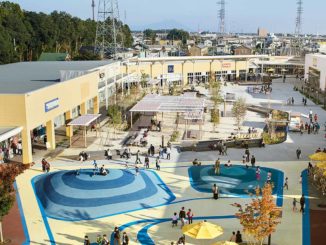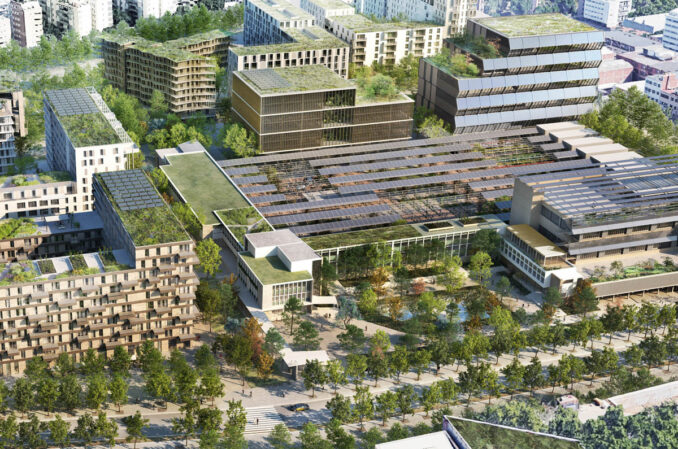
Ecodistrict laMercedes is a project to reactivate an old Mercedes-Benz factory in Barcelona. The project generates new economic and residential activity, contributing to the large urban regeneration of Bon Pastor and Besòs, which has now become the most dynamic urban area in the city.
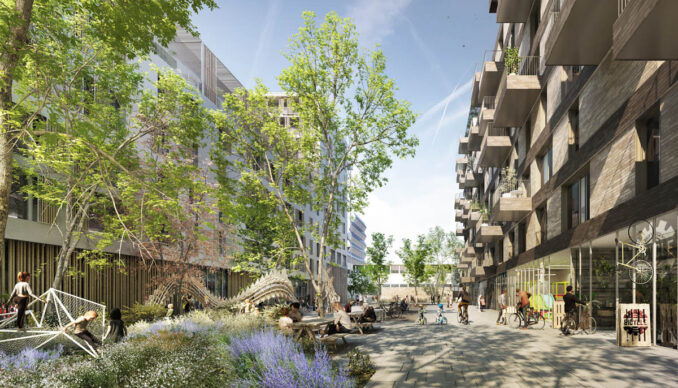
Mercedes – From automotive industry to a center of innovation and creation
The former Mercedes-Benz factory is a 9-hectare industrial site located strategically between the Bon Pastor neighbourhood and the center of Sant Andreu. In the 1950s, it became the headquarters of the public company ENMASA. However, it has been abandoned for the last 15 years.
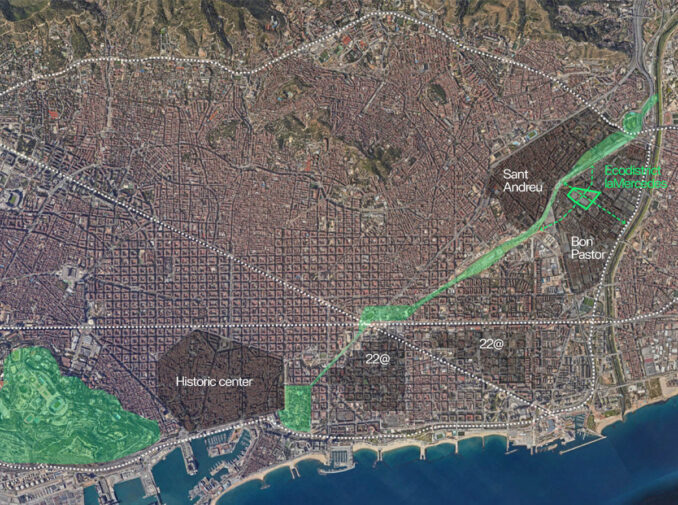
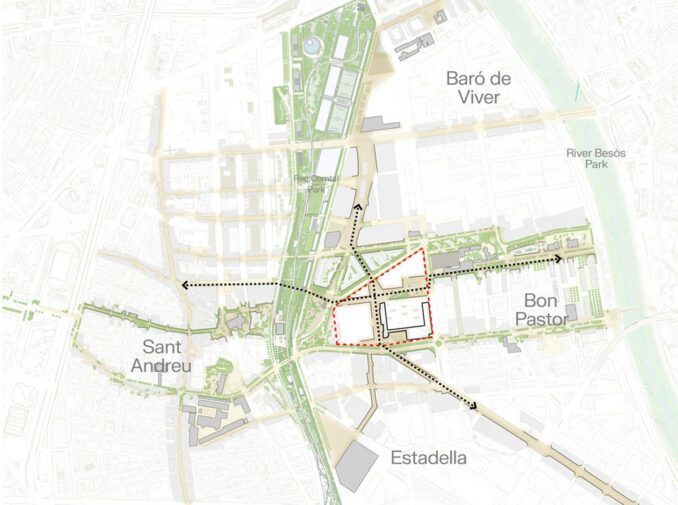
Its ongoing transformation foresees the introduction of a mix of residential and tertiary uses, with economic activity linked to innovation and industry 4.0, maintaining the historic industrial buildings in a complex with high standards of sustainability that will become a new social node in the neighbourhood.
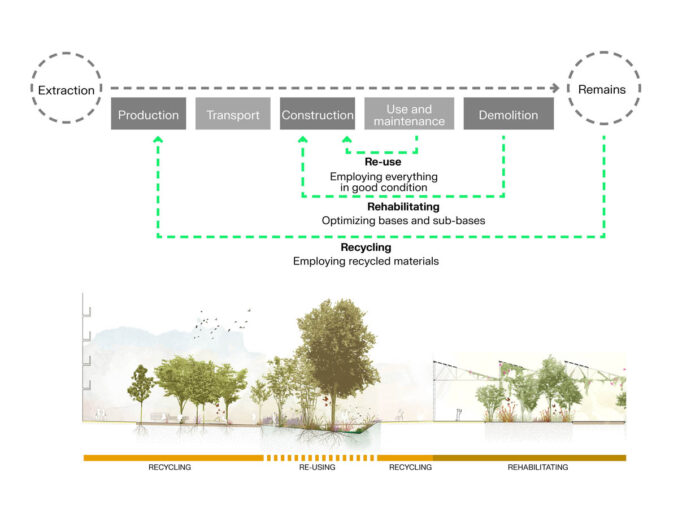
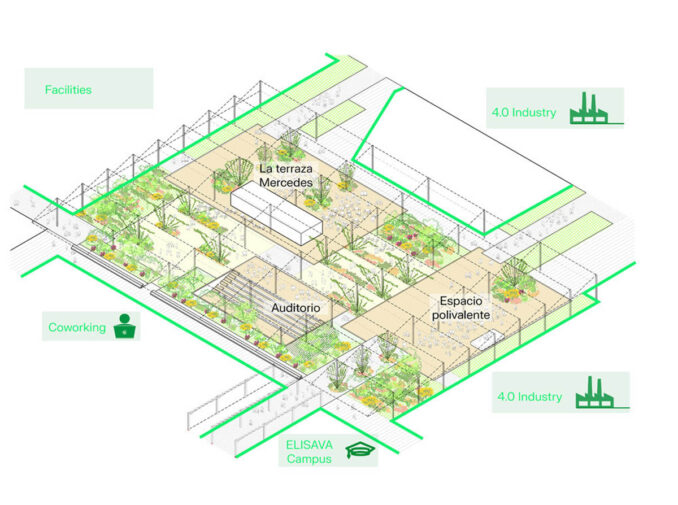
Completing the urban grid
The old industrial site is causing a disconnect between residential areas with significantly different social and economic characteristics. However, the LaMercedes area will serve as the intersection point of two new urban axes. Firstly, the east-west axis will connect the historic centre of Sant Andreu with the neighbourhood of Bon Pastor and the future park of Rec Comtal. Secondly, the north-south axis will connect La Maquinista and the Baró de Viver neighbourhood with the park of Rec Comtal and the future developments of the Torrent de la Estadella industrial estate. This proposal will connect areas that have historically been isolated, despite their proximity to one another. It contributes to a new centrality that will unify and bring together the diverse urban and social fabrics of the environment.
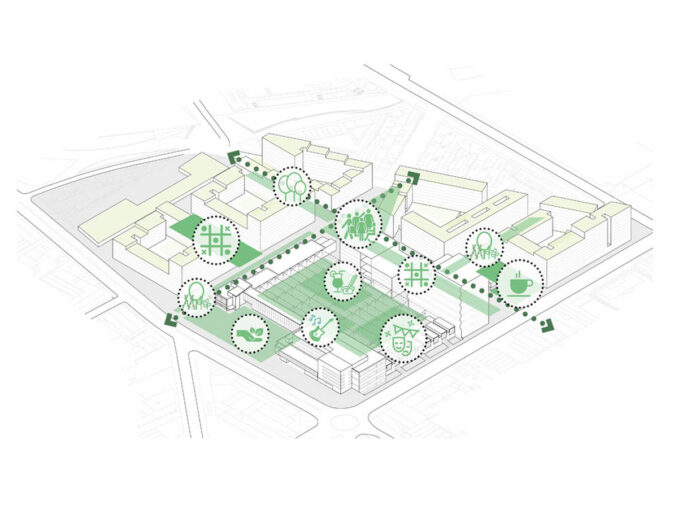
Recycling the industrial heritage
The Mercedes’s historical and heritage value lies in the material value of all its buildings, the result of successive projects from the 1950s to 1970s by architect Robert Terradas. Its Nordic-inspired rationalist architecture, as well as its intangible value, gives testimony to the neighbourhood’s industrial past, which many of its neighbors were participants in. The proposed development recognizes the place’s architectural history and social significance through the reuse of various existing buildings. laMercedes aims to conserve the main industrial buildings, which will be repurposed as cultural and educational facilities. New buildings will also be constructed for economic activities. The complex will be centered around the existing central building, whose structure will be preserved to create a large public plaza. The plaza will serve as the center of activity in the new neighborhood and will house a large clean energy production center. The goal is to maintain the character of the place and create a symbolic space that reinforces a sense of belonging to the community.
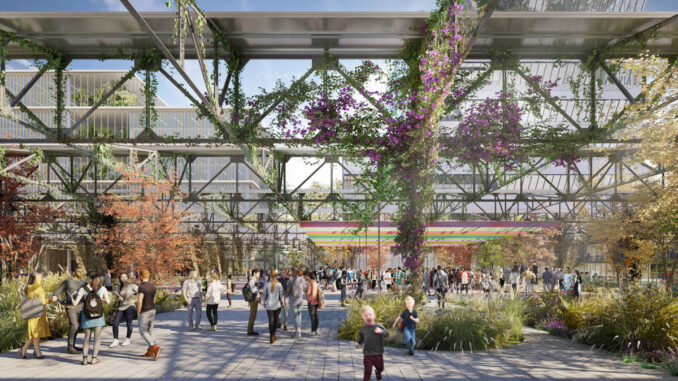
The first project in the complex is recovering the workshop and office building from the 1970s to implement the Elisava design school. The undertaking combines the preservation of heritage and implementation of knowledge-based uses in a sample of the Mercedes venue’s future.
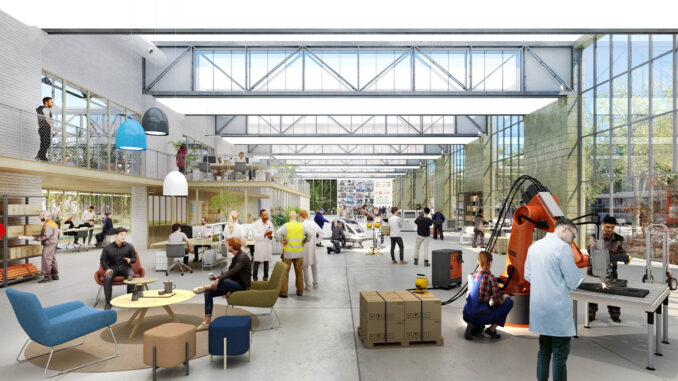
A mixed-use neighbourhood
The historic complex is transformed to house economic activity, which includes not only offices and facilities focused on education and knowledge but also a specific type of activity focused on the creativity of the 4.0 industry, as well as innovation, research, and sustainability.
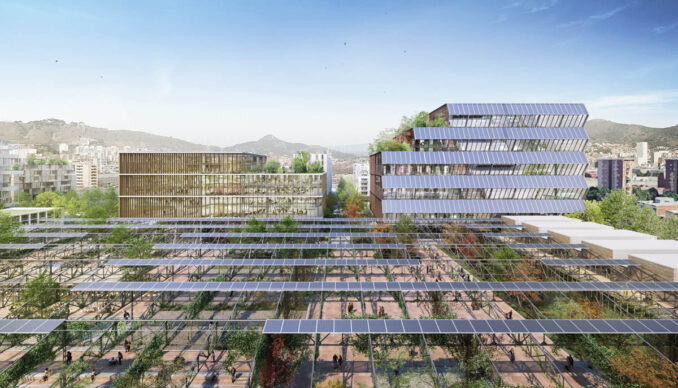
The configuration of the complex defines two main north-south and east-west axis, from which the residential blocks are developed, with adequate dimensions and proportions to offer high environmental quality, orientation, and ventilation. The commercial front dynamizes the pedestrian axes and provides activity to the different squares generated throughout the sector, guaranteeing an intensive use of public space and promoting proximity relations.
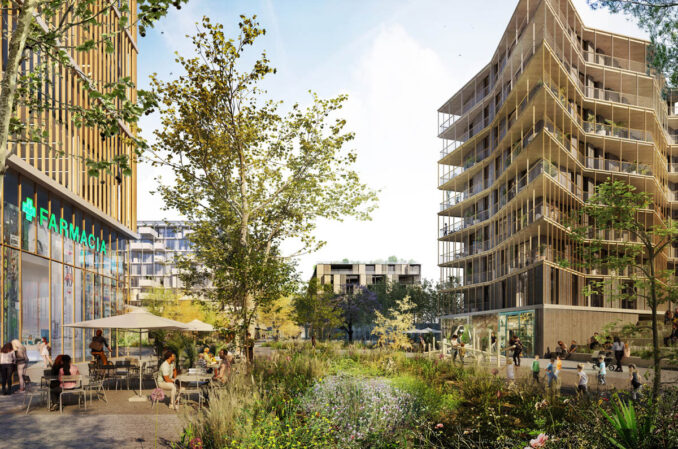
A mixed-use neighborhood is created by combining 60% housing (40% affordable and 60% free) with 40% economic activity, services, local commerce, industry 4.0, and facilities, generating synergies between the centers of innovation and knowledge.
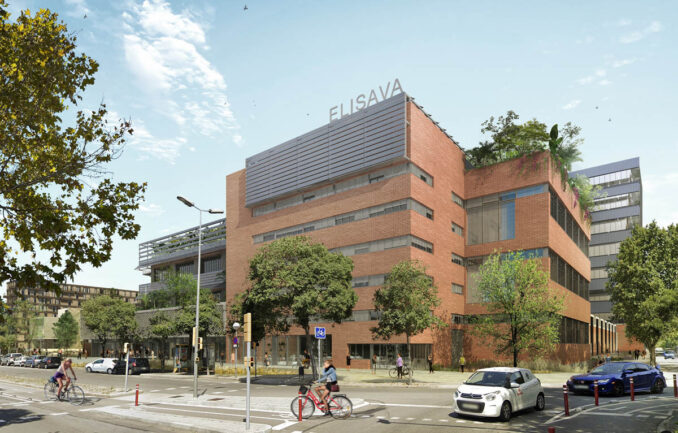
New ways of living
laMercedes will become a neighborhood where people can learn, live, and work. A compact neighborhood with houses of all types and characteristics, together with a multitude of ground-floor commercial shops, community facilities, and economic activities. Together, they configure a new centrality that contributes to unifying the heterogeneous urban fabric of the environment.
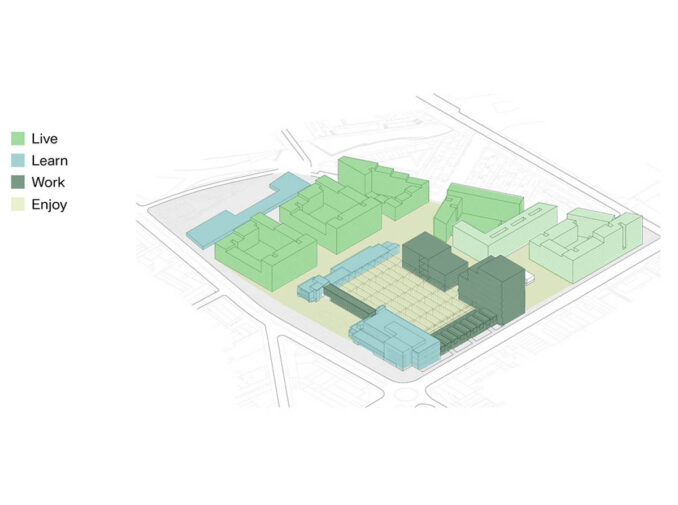
The project is committed to a new model of flexible, versatile, and non-hierarchical housing, with habitable outdoor spaces. The limits between the private and the common are redefined, creating a new collaborative housing model. The project promotes the creation of intermediate spaces, interior or exterior, between the private and public domains. The intermediate space is the scene of neighborhood coexistence, meetings, and games, and encourages community life.
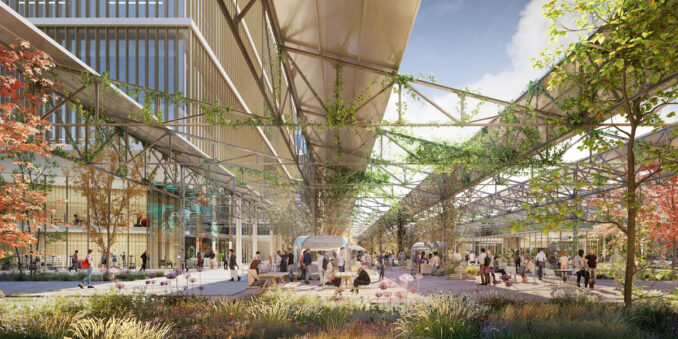
Ready to fight the climate emergency
An urban habitat ready to fight climate change. Structured around green infrastructure – streets and squares – and designed with systems and materials that can reduce temperatures in its surrounding environment by up to 3ºC. The free space will be a permeable and accessible meeting place that promotes social cohesion. Priority will be given to green spaces, enhancing nature and biodiversity over vehicles, which are eliminated from public spaces.
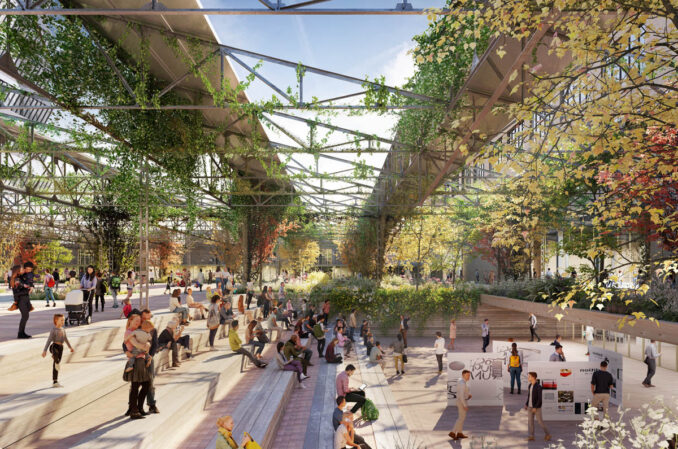
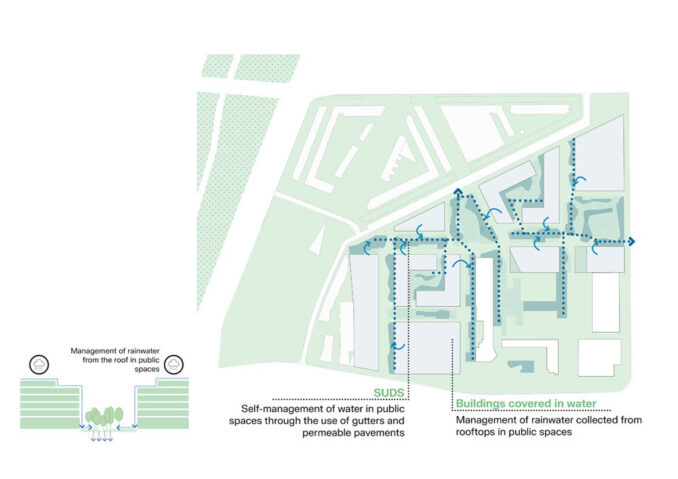
A peaceful, pedestrianized interior of the “Eco-illa” is proposed thanks to an intelligent mobility system. All mobility and infrastructure are integrated into an underground floor to free the ground floor of vehicles and enhance the permeability of laMercedes. A completely pedestrianized and cyclable space is created, with no motor vehicle traffic other than emergency service vehicles on the surface. This creates accessible and safe routes to integrate laMercedes into the urban route network.
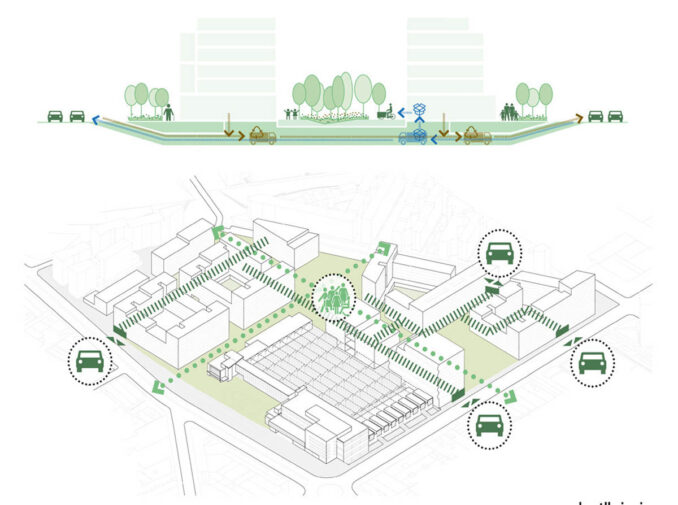
An underground traffic system with entrances from the perimeter streets is implemented. From there, vehicles will be directed to the various car parks, with loading and unloading zones reserved. Additionally, in the immediate future, it will be possible to create last-mile logistics spaces, electric vehicle charging zones, and other areas for new mobility.
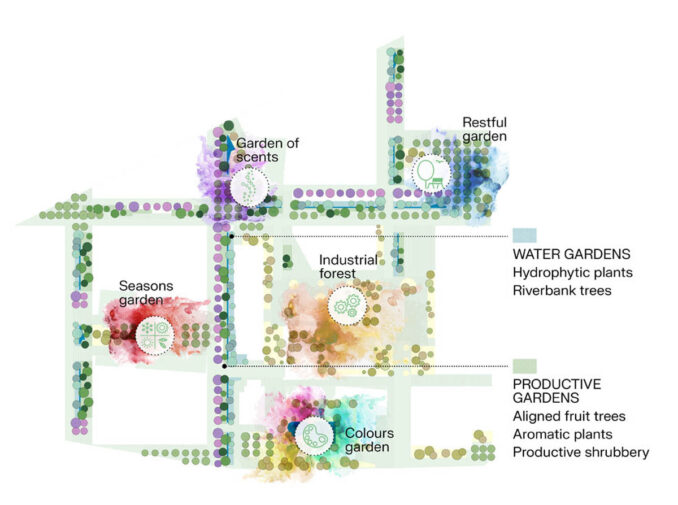
An inclusive city
Planning has been understood in all its urban, social, economic, and environmental aspects as a unique opportunity to work from its genesis with the premises of inclusive urbanism: the construction of a city that integrates facilitates daily life and promotes social exchange in a high-quality urban environment.
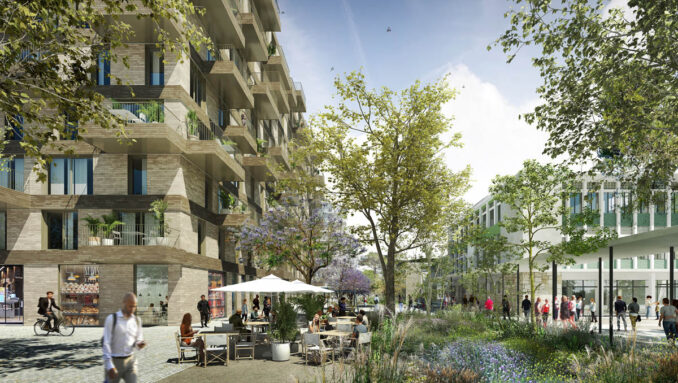
Ecodistrict laMercedes
Location: Sant Andreu, Barcelona
Client: Conren Tramway
Authors: Batlleiroig Arquitectura.
Enric Batlle Durany, Joan Roig i Duran, Albert Gil Margalef, Helena Salvadó Giné, Abel Porcar Badal, Joan Batlle Blay, Josep Batlle Blay – Architect
Team: Mercedes Blay Blanc, Helena Valls Fígols – Architect and urban planner / Josep Maria Navarrete, Diana Martínez Badia, Laura Menéndez Smith, Laura Florentín Aragón – Architect
Collaborators: Garrigues – Lawyers
Photo credits ©Antonio Navarro Wijkmark ©SBDA


